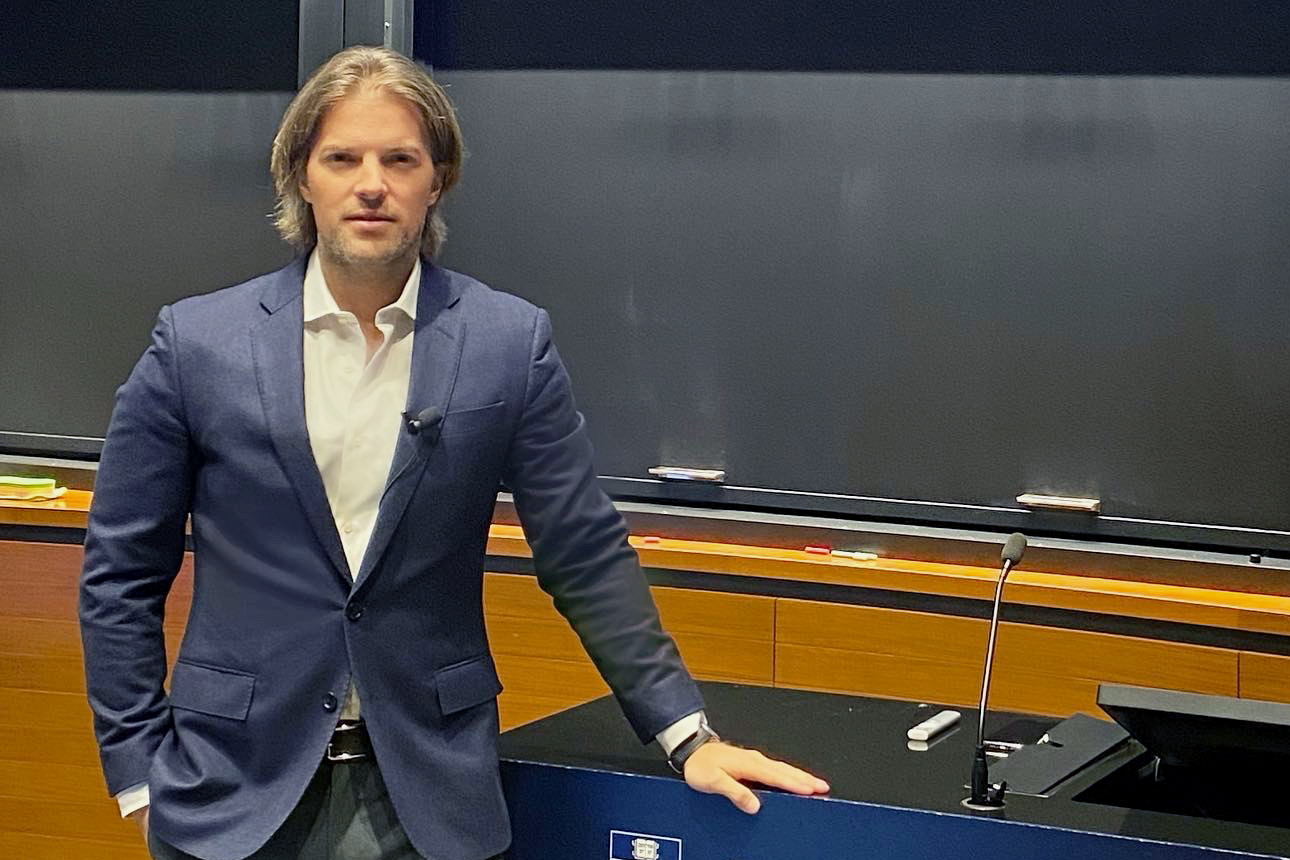Entrepreneurship in art course brings together business and arts students
The course was designed to give students a first-hand insight into the lives of entrepreneurs in the art market.

Courtesy of Magnus Resch
The art market is a multi-billion-dollar, ever-changing platform. This fall, students from the School of Art and the School of Management came together to study it.
Entitled “Entrepreneurship in the Art Market,” the course — offered by The School of Management — is taught by visiting instructor Magnus Resch, an economist, serial entrepreneur and Amazon bestselling author of entrepreneurship books. This year was the first in which he brought MBA and MFA students together into the six-session workshop class, where they learned about different forces that shape the circulation of art.
“Business students learn little about the art market, and artists often don’t know enough about the economics of art,” Resch told the News. “It’s this exchange between artists and business students that make this class so unique.”
The class included visits to the Armory Art Fair with guided tours and two mixers to promote dialogue among students beyond the classroom.
Painting and printmaking student Mike Picos ART ’24, who audited the class, explained that a highlight of the course was connecting with the business students.
“It was very productive to get a sense of how people other than artists think of art and experience art,” Picos said. “I had a lot of great conversations with people from the School of Management and I feel like I really have a better understanding of how they perceive what we are doing.”
Some guest speakers included leaders in these fields, such as digital artist Michael Winkelmann, known professionally as Beeple, who sold his NFT for $69 million. Other speakers included top curators, art advisors, collectors, a gallery founder in Paris and Charles F. Stewart, the chief executive officer of Sotheby’s, one of the world’s largest art auction houses.
“I was surprised by how much money is involved in the art market and how the money is being placed within different parts interacting in the market,” said Younes Kouider ART ’23, sculpture student who was taking the class.
Each class also included presentations by the artists in the classroom where they shared their own works, what inspired them and the struggles they currently face.
Resch noted that these presentations often led to vivid discussion around market strategies, pricing and marketing ideas. Many conversations also focused on how entrepreneurs can achieve success in the art world.
“This class is a nucleus for students who are interested in pursuing a career in creative fields,” Resch explained. “Previous students joined Sotheby’s, Gagosian gallery, the Metropolitan Museum, the Whitney and the Royal Opera, a non-profit museum and others. And artists gain a much clearer picture of how to continue their career after having left their programme.”
Students had two options for the final project in the course: a paper on the future development of the art market or a work of art that demonstrates their main takeaways from the course.
Jane Cavalier SOM ’23, said that the course as a whole helped her understand the different opportunities available in the art market. Before attending business school, Cavalier worked at the Museum of Modern Art.
“I was in the curatorial department there, so I didn’t have a lot of experience with running the business of the museum but I was involved in developing exhibitions,” she said. “For me, the class helped me sharpen my lens on what different professional opportunities there are for someone who wants to work at the intersection of art and business.”
The course will be offered again next fall.







